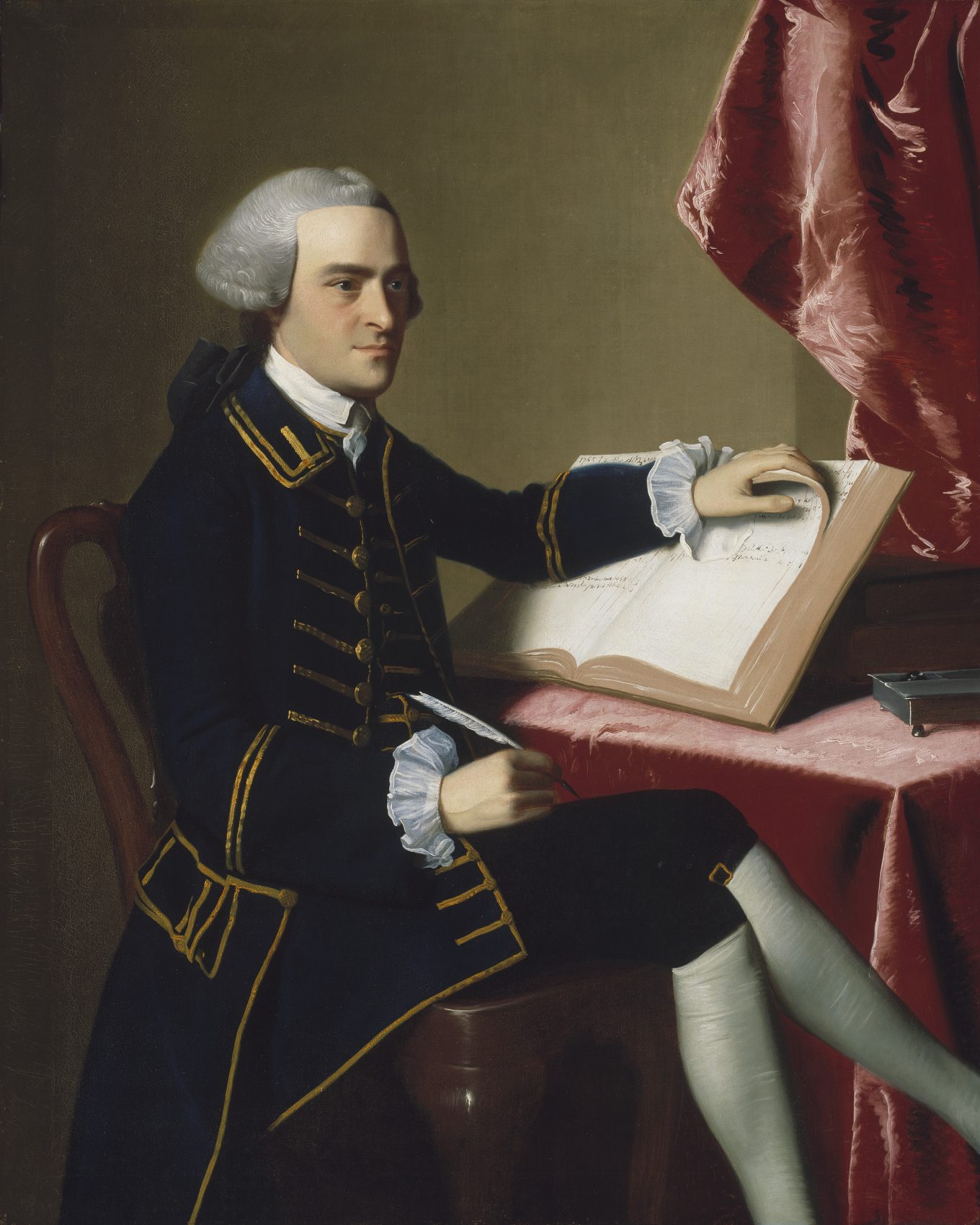Hancock, John (1737-1793), was an American revolutionary leader who became the first person to sign the Declaration of Independence in 1776. His bold signature is still famous. Today, when people sign their names, they are said to have written their John Hancock.

Hancock was born on Jan. 23, 1737 (Jan. 12, 1737, according to the calendar then in use), in Braintree (now Quincy), Massachusetts, where his father was a minister. His father died when John was a boy, and his uncle, Thomas Hancock, one of the wealthiest merchants in Boston, adopted him. After his graduation from Harvard College in 1754, John joined his uncle in business. He inherited the company after his uncle’s death in 1764. In 1766, Hancock won election to the Massachusetts General Court, the lower house of the colonial legislature.

Hancock became known as a revolutionary after an incident called the Liberty Affair in 1768. One of his vessels, the Liberty, arrived in Boston Harbor to unload a shipment of wine and take on new cargo. British customs officials seized the Liberty, charging that Hancock had disobeyed regulations. This action enraged the citizens of Boston. Mobs rioted, and the British government sent troops to restore order. The Liberty Affair became one of the events that led to the American Revolution.
In 1774, the Massachusetts General Court became the Massachusetts Provincial Congress. Hancock served as its president in 1774 and 1775.
As tensions between the Americans and the British grew, Hancock used his wealth and influence in the movement for independence. His activities caused the British to regard him as one of the most dangerous revolutionaries. He and Samuel Adams, another Massachusetts leader, were nearly arrested by the British in 1775. But the famous ride by their fellow patriot Paul Revere gave them warning and enabled them to escape.
Hancock served as president of the Continental Congress from 1775 to 1777. As president, he was the first to sign the Declaration of Independence adopted by the Congress. Hancock hoped to command the Continental Army that fought for independence during the American Revolution. He was disappointed that the Congress chose George Washington. In 1778, however, Hancock led about 5,000 Massachusetts soldiers in an unsuccessful attempt to free Rhode Island from the British.
Hancock presided over the convention that adopted the Massachusetts Constitution in 1780, and he became the first governor under the new charter. He served nine terms as governor, from 1780 to 1785, and from 1787 until his death in 1793.
